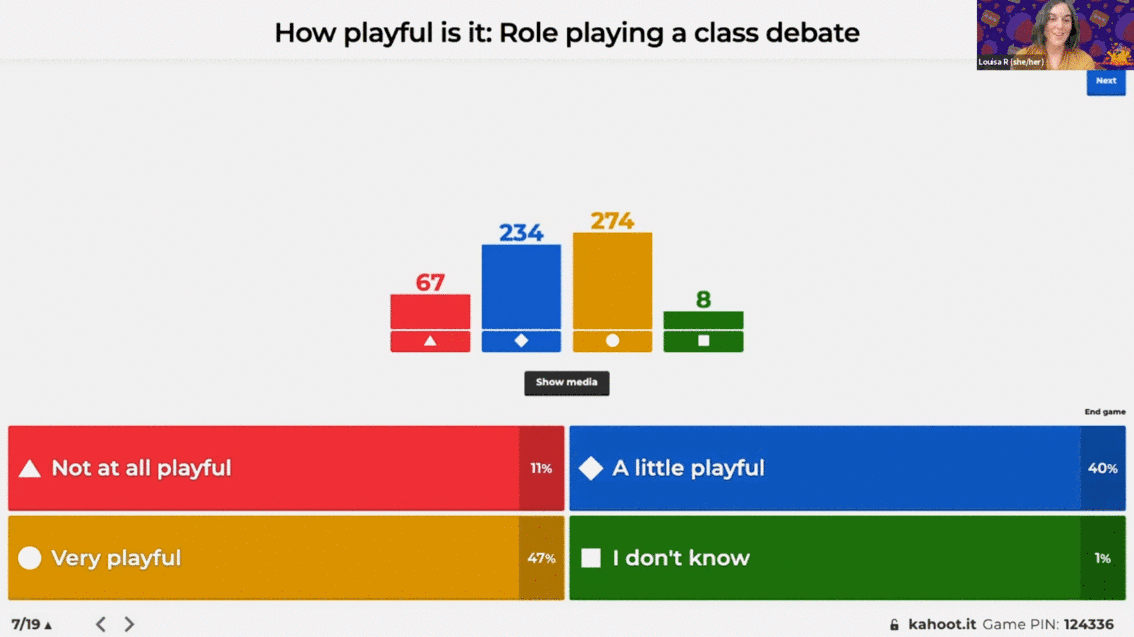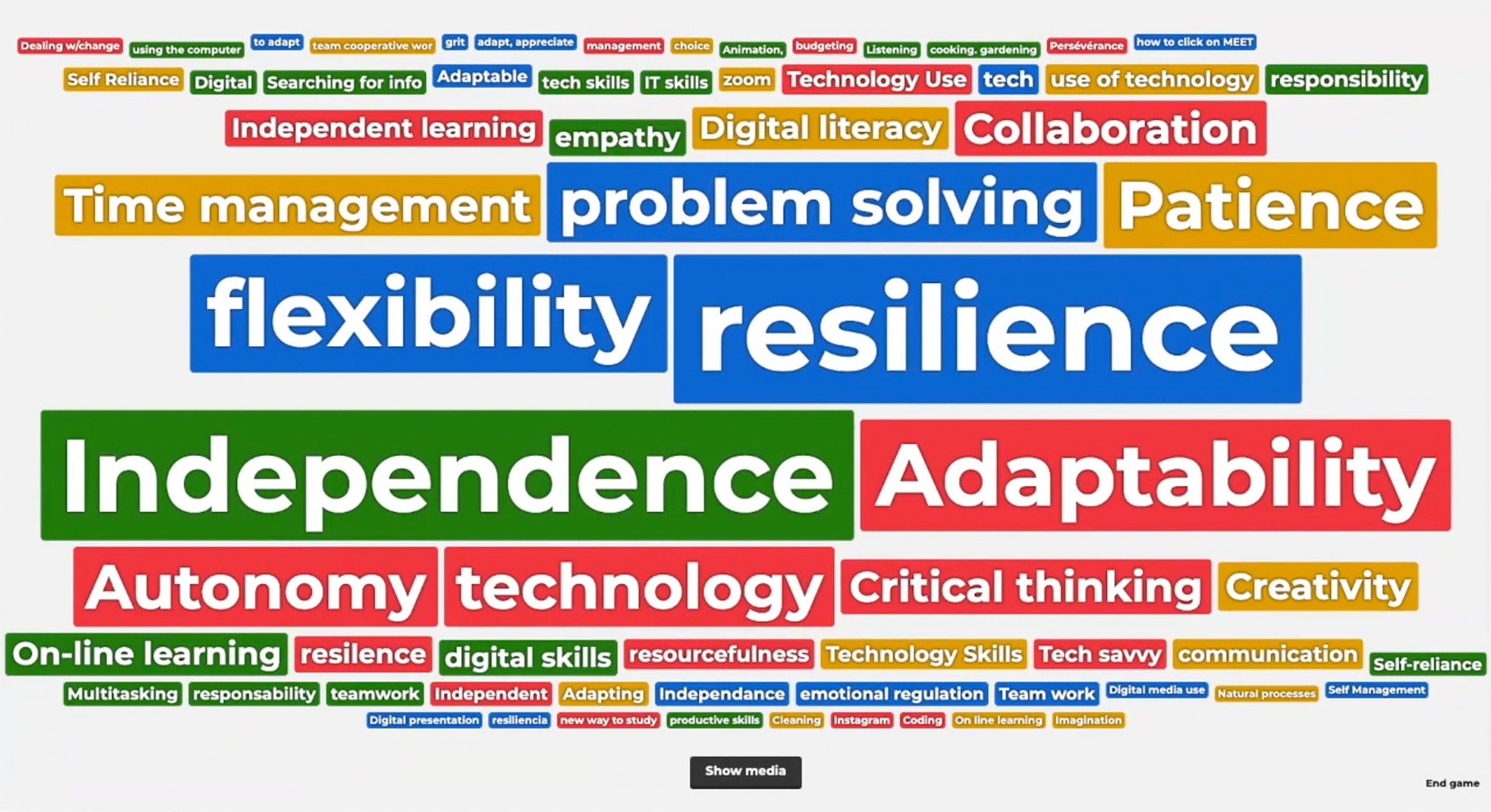Playful learning was on educators’ minds at the recent Kahoot! EDU Meetup, where I led a session on what playful learning looks like and the valuable future-ready skills we can build through play. I also shared ideas about how we might recognize and celebrate the skills our students have built during this challenging time to have a more strengths-based perspective on learning loss. The amazing educators that participated in the session contributed their opinions and ideas, through polls, open-ended questions, and of course a very lively chat! Keep reading for some insights from our awesome educators.
Make learning playful by design!
There are infinitely many playful learning activities out there, and different activities feel playful to some but not others. In our session, video games felt much more playful to participants than role-playing a debate. But in fact, you could set the stage for a very playful debate by having silly characters, special rule cards, or even surprise twists! It’s also possible to have a very un-playful video game that has very little choice, no chance to try again, or other aspects that might make it feel demotivating, even if it is technically a game.
Similarly, with Kahoot!, you can make learning playful by creating thought-provoking questions that students really care about, and have them play with friends. Even with a kahoot, it’s important to thoughtfully create engaging, relevant questions to spark your students’ interest. With this, we can see that the keys to playful learning, and good Kahoot!’ing, is to consider the context and setup of your activity, and to build in room for things like social interaction, student choice, and iteration.

Students have made many future-ready learning gains!
Future-ready skills are a broader term that includes things like 21st-century skills, social emotional skills and soft skills. During the session, we brainstormed what skills students might learn from various playful activities and what skills they may have built from the challenges over the past 18 months of the pandemic. Critical thinking, independent problem-solving, resilience, finding new ways to communicate, time management and patience—not to mention all the digital literacy skills they have honed – were among the most popular responses.
Despite the ever-present worry about learning loss through the pandemic, students have made important gains that should be recognized and celebrated! As educators, we can encourage students to be proud of how far they’ve come and find ways to balance this type of skill development with academic content standards.

Let’s develop our students’ strengths!
We need to let our students know that we value them! One important way to do this is through reflection, and another is using playful learning. Together, these two ideas have the potential to be very powerful!
Some students may feel intimidated or vulnerable when reflecting on their pandemic experiences, and may need to build confidence to articulate their future-ready skills. A playful environment can lower the stakes and put students at ease, while helping them feel connected and willing to try new things. Participants at the Meetup came up with a number of ideas they wanted to try in this area, including games, songs, makerspaces and a positivitree!
SEL-focused activities to get you started:
To help get you started with incorporating reflection and playful learning with your students, we’re thrilled to share two SEL-focused Kahoot! Courses with you – full class sessions that combine different content formats to make learning meaningful and engaging:
- Name that skill – Students create kahoots about their own learning and growth, and see if their classmates can figure out what future-ready skills they have built
- Superskills game board – Students create game boards that represent the pathway they took to develop a particular skill
We encourage you to remix and adapt these resources, and that they spark brand new ideas for implementing playful learning and reflection in your classroom.
We hope you’ll try these activities out and let us know how they go on Twitter, Facebook, Instagram, LinkedIn, and TikTok. Have fun!




